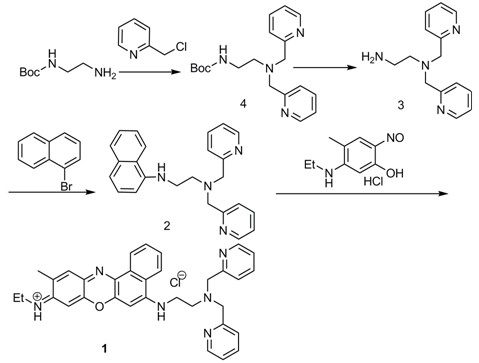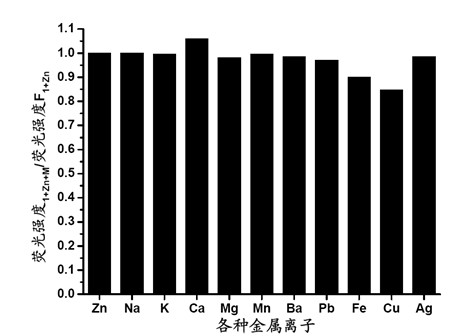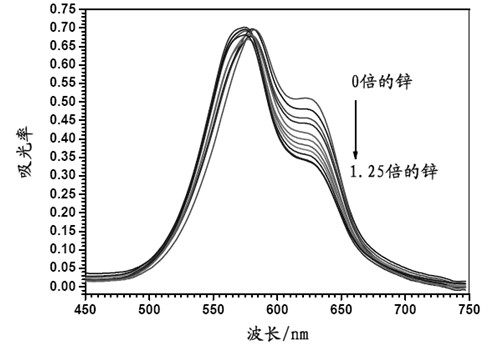Near infrared fluorescent probe for detecting zinc ions in water phase and preparation method thereof
A fluorescent probe, near-infrared technology, applied in chemical instruments and methods, biological testing, luminescent materials, etc., can solve problems such as difficult large-scale application, high cost, and complicated operation
- Summary
- Abstract
- Description
- Claims
- Application Information
AI Technical Summary
Problems solved by technology
Method used
Image
Examples
Embodiment 1
[0035] Such as figure 1 As shown, 6.56g of 2-chloromethylpyridine hydrochloride (0.040 mol, M=164.03g / mol) was dissolved in 40 mL of water, and then 3.20g (0.080 mol, M=40.00 g / mol ) sodium hydroxide to give a red solution. Under sufficient stirring, 3.20 g of N-tert-butoxycarbonylethylenediamine (0.020 mol, M=160.21g / mol), 128 mg of phase transfer catalyst, 6.64 g of potassium iodide, and 40 mL of tetrahydrofuran were added. The reaction was carried out at room temperature for 2 days under the protection of argon. Extracted with dichloromethane, dried, and evaporated to remove the solvent to obtain a crude product. The intermediate product N`-tert-butoxycarbonyl-N,N-bis(2-chloromethylpyridine)ethylenediamine (4) was obtained as a colorless oil after separation on a silica gel column.
[0036]Dissolve 5.0g of N`-tert-butoxycarbonyl-N,N-bis(2-chloromethylpyridine)ethylenediamine (4) (0.0146mol, M=342.44g / mol) in 15mL of dichloromethane, place in an ice water bath. With su...
Embodiment 2
[0043] Fluorescent probe obtained in embodiment one 1 MTT cytotoxicity test: MTT colorimetry is a method for detecting cell survival and growth. The detection principle is that succinate dehydrogenase in the mitochondria of living cells can reduce exogenous MTT to water-insoluble blue-purple crystal formazan Zan (Formazan) and deposited in cells, but dead cells do not have this function. Dimethyl sulfoxide (DMSO) can dissolve formazan in cells, and its light absorption value is measured at a wavelength of 490nm with an enzyme-linked immunosorbent detector, which can indirectly reflect the number of living cells.
[0044] 1. Weigh 0.5 g of MTT, dissolve it in 100 ml of phosphate buffered solution (PBS), filter it with a 0.22 μm filter membrane to remove bacteria in the solution, prepare an MTT solution with a concentration of 5 mg / ml, and store it in the dark at 4°C.
[0045] 2. Cell inoculation: Collect KB cells in logarithmic phase, make a single cell suspension with culture...
PUM
 Login to View More
Login to View More Abstract
Description
Claims
Application Information
 Login to View More
Login to View More - R&D
- Intellectual Property
- Life Sciences
- Materials
- Tech Scout
- Unparalleled Data Quality
- Higher Quality Content
- 60% Fewer Hallucinations
Browse by: Latest US Patents, China's latest patents, Technical Efficacy Thesaurus, Application Domain, Technology Topic, Popular Technical Reports.
© 2025 PatSnap. All rights reserved.Legal|Privacy policy|Modern Slavery Act Transparency Statement|Sitemap|About US| Contact US: help@patsnap.com



